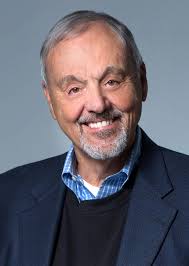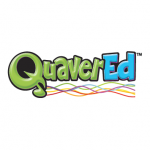
“Let’s start with an irrefutable statement: The arts broaden our perspective and enhance the world around us.” Quaver co-founder and president Dr. David V. Mastran shares his words of wisdom about the arts. Read the blog below.
AMERICANS FOR THE ARTS BLOG- Let’s start with an irrefutable statement: The arts broaden our perspective and enhance the world around us. No one should disagree with that.
Now for a simple follow-up question: If the arts—which include all of music, the visual arts, performing arts, and more—are so very broad and so very expansive, why do we insist on using restrictive labels to define them? The term “Fine Arts” is used across all educational levels to cover the spectrum of arts offerings. Fine Arts is a very narrow definition that is too restrictive. We should stop doing it. We should leave the term back in 2019.
Our goal in the new decade, at least as it concerns our ability to appreciate the aesthetic, economic, educational, and human impact of the arts, should be to expand our view of the arts, not restrict it. The arts are limitless in their potential to reach, teach, motivate, and energize. Why put limits on something that is limitless?
Here’s what I suggest: Let’s begin using the term “Creative Arts” instead of “Fine Arts.” It provides those of us who are in the arts a larger umbrella and a bigger prism through which to look at the enormous impact we have on the world—not just on the art world, but within the business world and throughout every single sector of the general economy.
The term “Fine Arts” doesn’t conjure up much value in the business world. Sounds like something you would find in a museum or in a fine jewelry shop. Here I speak from my perspective as both a business person and a leader in arts education. “Creative Arts,” on the other hand, emphasizes the importance of bold, innovative, creative thinking. Thinking outside the box. This is what organizations want from their employees.
The founders of Google agree: Sergey Brin and Larry Page conducted a study and discovered that it was not their employees’ intelligence or technical virtuosity that mattered most, but their creative, social, and emotional skills.
They see what I’ve been seeing for decades: Creativity is the key. Not just in the art world, but in the world at large as well.
My company, QuaverEd, is a leader in music education. Music—one of the most powerful pillars of the fine arts—is the heartbeat of QuaverEd. It is the content that drives our creative engine.
In 2019 alone, QuaverEd reached over 16,000 music teachers throughout the world, impacting over four million students in all 50 states and 31 countries. We stress individual creativity in our curriculum through composition, musical performance, stagecraft, and even movement. This is “Creative Arts” at its very best.
The children we are reaching are the same ones who will eventually become productive members of a competitive, compassionate, and creative economy. Even if they never perform music again, the experience of creating music will empower them to generate new and creative ideas in the future.
But the far wider, longer-lasting implication is that what we do goes well beyond the Fine Arts themselves and splashes over into the broader category of Creative Arts. This has far broader social, artistic, and economic implications. We are developing creative individuals to advance our society—individuals who are not only unafraid to suggest something new, but are eager to do so.
In a study released last year, the National Endowment for the Arts determined that the arts and cultural sector contributed over $760 billion to the U.S. economy in 2015, including a $21 billion international trade surplus—a larger share of the nation’s economy than transportation, tourism, and agriculture.
Figures like this tell us what we already know but need to be reminded of constantly: The arts influence every single one of us. They drive the economy and help create a competitive, compassionate, creative workforce, which allows us to look at the world through not just the Fine Arts prism but through the perspective of creating a better world.
Article originally published by American for the Arts Blog on January 15, 2020
